Aluminum is a versatile and essential metal that has revolutionized modern society with its unique properties. From transportation to construction, packaging to consumer goods, aluminum has found its way into nearly every aspect of our lives. The discovery of aluminum is credited to the Danish chemist Hans Christian Oersted, who produced it in 1825. However, it was not until the 1880s that aluminum became commercially viable with the invention of the Hall-Heroult process, a technique for extracting aluminum from its ore. The process revolutionized the industry, making aluminum more accessible and affordable, leading to its widespread use in modern times. Read More…
Time is money, and we save you both. We don’t mess around when it comes to precious time, and we offer the highest quality aluminum products that other companies don’t stock. We make a point of keeping products on-hand that other companies will not, because it is our goal to make your experience with us painless and fulfilling. Visit our website or call us today to learn more!

At Alliant Metals, we take pride in being a trusted source for high-quality aluminum products that meet the demands of a wide range of industries. Our work revolves around providing precision-cut aluminum in the form that best serves our customers, whether that means sheets, plates, bars, or custom-cut shapes prepared to exact specifications.
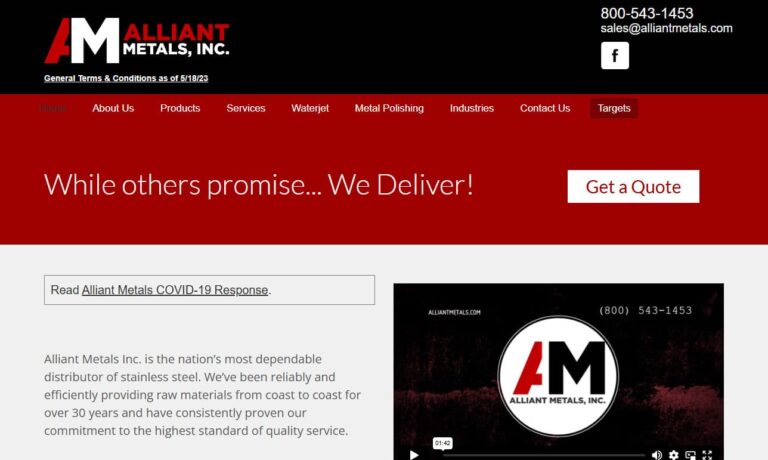
At A-1 Alloys, we take pride in being a trusted partner in the aluminum industry, providing customers with high-quality materials, precise processing, and dependable service. Our focus on aluminum allows us to deliver a wide range of grades, forms, and sizes to meet the unique needs of industries that rely on strength, durability, and lightweight performance.

At Champagne Metals, we are dedicated to delivering premium aluminum products and solutions designed to meet the diverse needs of our clients. Our expertise spans a broad spectrum of aluminum offerings, including extrusions, fabricated components, and custom profiles tailored to specific requirements.

More Aluminum Manufacturers
Aluminum, a remarkably versatile and indispensable metal, has transformed modern society with its unique attributes and broad range of industrial applications. As one of the world’s most widely used metals, aluminum’s influence spans critical sectors such as transportation, construction, packaging, electronics, aerospace, and consumer goods manufacturing. Since its first isolation by Danish chemist Hans Christian Oersted in 1825, aluminum has evolved from a precious laboratory curiosity to a core industrial material. The commercial viability of aluminum production began in the 1880s with the Hall-Heroult process, a revolutionary extraction method that made this lightweight, durable, and corrosion-resistant metal more accessible and affordable than ever before. This breakthrough paved the way for aluminum’s rapid adoption across global industries, fueling innovation and economic growth.
Processes for Creating Aluminum
Aluminum is abundant in the earth’s crust, ranking as the third most common element, yet it never appears in its pure form naturally. Instead, aluminum is extracted from bauxite, a reddish-brown rock rich in aluminum oxide (alumina, Al2O3). The two primary industrial production methods are the Hall-Heroult process and the Bayer process, both of which are fundamental to the modern aluminum supply chain.
The Bayer Process is the initial step in the production of aluminum. Here, bauxite ore is ground into a fine powder and mixed with hot caustic soda (sodium hydroxide). This chemical treatment dissolves the alumina in the bauxite, leaving behind impurities such as iron oxides and silica. After filtration and washing, the remaining solution is cooled, causing pure alumina to crystallize out. The alumina is then dried, resulting in a fine white powder that is the raw material for the next stage.
The Hall-Heroult Process follows, using electrolytic reduction to separate pure aluminum metal from alumina. The purified alumina is dissolved in molten cryolite (Na3AlF6), which lowers the melting point and increases conductivity. An electric current is passed through the solution in a specially designed electrolytic cell. Aluminum ions migrate to the cathode, where they are reduced to form molten aluminum, while oxygen is released at the carbon anode, combining to form carbon dioxide gas. The molten aluminum is periodically siphoned off, cooled, and cast into ingots, billets, or other shapes for downstream processing.
Secondary Aluminum Production, also known as aluminum recycling or remelting, is an increasingly vital part of the industry. In this process, scrap aluminum (such as used beverage cans, automotive parts, and construction materials) is collected, sorted, and melted in a furnace. Alloying elements may be added to achieve precise material properties. The molten aluminum is then cast into new products, significantly reducing energy use—recycling aluminum requires only about 5% of the energy compared to mining and refining new aluminum from bauxite. This makes secondary production a highly sustainable and eco-friendly method, helping to reduce greenhouse gas emissions and conserve natural resources.
What countries have the most bauxite deposits?
Bauxite, the primary ore for aluminum production, is unevenly distributed globally, with a handful of countries holding the lion’s share of deposits. Understanding the global bauxite landscape is crucial for anyone evaluating aluminum sourcing, supply chain stability, or investment opportunities in the aluminum market. Here’s a rundown of the top players based on reserves as of 2025:
- Guinea: Leading the world with over 7.4 billion metric tons—about 25% of the world’s total reserves, according to USGS data. Its West African mines, rich in high-grade bauxite, supply major exporters such as China, with output exceeding 100 million tons annually.
- Australia: A close second with 5.1 billion tons and the world’s highest annual production (approximately 110 million tons). The Darling Range and Weipa regions yield low-impurity ore, making Australia a global aluminum and alumina powerhouse.
- Vietnam: Sitting on 5 billion tons, mostly in the Central Highlands. While largely untapped due to infrastructure and environmental challenges, Vietnam holds tremendous future potential, though current production is under 2 million tons per year.
- Brazil: With 2.7 billion tons, concentrated in the Amazon Basin, particularly Pará state. Brazil produces around 35 million tons yearly, supporting both domestic smelters and global exports.
- Jamaica: Rounds out the top five with 2 billion tons. Once a global leader, Jamaica’s production has declined to 6-7 million tons annually as reserves are gradually depleted.
Honorable mentions include India (1.5 billion tons) and China (1 billion tons), both major producers despite smaller reserves. Guinea and Australia, with their immense and accessible deposits, remain the bauxite industry’s dominant players.

In secondary aluminum production, scrap aluminum is recycled and remelted to create new products. This sustainable method involves collecting and sorting aluminum scrap—such as beverage cans, automotive parts, and extrusions—then melting it in a furnace. Alloying agents can be added to achieve specific material properties. The molten metal is cast into ingots or other forms, ready for manufacturing. This closed-loop recycling process dramatically reduces energy consumption and emissions compared to primary smelting, making it a cornerstone of sustainable aluminum manufacturing.
Disadvantages of Aluminum
While aluminum is celebrated for its many advantages, the production of aluminum does present certain disadvantages and environmental challenges. Below are key concerns for industry professionals, manufacturers, and environmentally conscious buyers:
- Environmental Impact: Primary aluminum production is energy-intensive and contributes significantly to air pollution, greenhouse gas emissions (mainly CO2 and perfluorocarbons), and the destruction of natural habitats. Bauxite mining can result in deforestation, water contamination, and biodiversity loss.
- Health Risks: Workers in aluminum plants may be exposed to dust, fumes, and chemicals linked to respiratory issues and, in rare cases, neurological disorders. Proper workplace safety protocols are essential to minimize risks.
- Waste Management: Red mud, a byproduct of the Bayer process, poses long-term disposal and contamination challenges. Improper handling can lead to environmental hazards, polluting soil and water resources.
- Recycling Challenges: While aluminum is highly recyclable, contamination with other materials can complicate the recycling process. Maintaining purity and efficient separation is critical for producing high-quality recycled aluminum.
Are you exploring ways to minimize the environmental footprint of your aluminum supply chain? Consider integrating recycled aluminum or working with manufacturers focused on sustainable production practices.
Benefits of Aluminum
Despite its challenges, aluminum offers a range of exceptional benefits that make it indispensable across modern industries. The combination of its physical, chemical, and mechanical properties supports diverse use cases and drives demand among engineers, architects, manufacturers, and product designers.
-
Lightweight
Aluminum is a lightweight metal, weighing approximately one-third as much as steel or copper. This property makes it the material of choice for transportation applications, including automotive, aerospace, and rail, where reduced weight translates to improved fuel efficiency, easier handling, and lower emissions. In structural engineering, lightweight aluminum components simplify construction and reduce load on foundations. -
Corrosion-Resistant
Aluminum naturally forms a thin, protective oxide layer that shields it from corrosion, even in harsh environments. Its resistance to rust and weathering makes it ideal for outdoor uses, such as building facades, roofing, marine vessels, and food and beverage containers. This durability ensures longer service life and lower maintenance costs. -
Durable
With excellent durability and the ability to withstand extreme temperatures, aluminum is suitable for demanding applications in aerospace, defense, and industrial manufacturing. Its longevity—often exceeding decades—ensures long-term performance in construction, transportation, and consumer products. -
Conductive
Aluminum is a highly efficient conductor of heat and electricity. It is widely used in power transmission lines, electrical wiring, and electronic heat sinks. Its ability to dissipate heat quickly makes it indispensable in electronics and cooling systems. -
Versatile and Formable
Aluminum’s malleability allows it to be cast, forged, extruded, drawn, or machined into a vast array of shapes and sizes. This versatility supports innovative designs in automotive, aerospace, architecture, and consumer products. Whether you need complex extrusions, precision components, or simple sheet metal, aluminum can be tailored to your requirements. -
Recyclable
Aluminum is one of the most recyclable materials in the world. Over 75% of all aluminum ever produced is still in active use today. Recycling aluminum consumes just 5% of the energy required for primary production and emits far less CO2, making it a key driver for sustainable manufacturing and circular economy initiatives.

Are you searching for green building materials or energy-efficient product components? Aluminum’s unique blend of lightweight strength, durability, and recyclability makes it a top contender for eco-friendly design.
Innovations in Aluminum Recycling
Recent years have seen a surge in innovations within aluminum recycling, driven by increasing demand for sustainability, resource conservation, and environmental responsibility. These advancements are transforming the secondary aluminum industry and expanding the possibilities for recycled aluminum products.
- Advanced Sorting Technologies: Modern recycling facilities utilize sensor-based sorting systems, including X-ray, near-infrared, and spectroscopic technologies, to accurately separate aluminum from other metals and materials. This enhances the purity and value of recycled aluminum, enabling its reuse in high-performance applications.
- Efficient Recovery Methods: Techniques such as eddy current separators, hydrocyclones, and electromagnetic sorting are improving the recovery of aluminum from complex waste streams, including automotive shredder residue and mixed packaging.
- Energy-Efficient Smelting: Cutting-edge smelting methods, such as salt-free molten metal refining and improved furnace designs, reduce energy consumption and greenhouse gas emissions in secondary aluminum production.
- Closed-Loop Recycling Systems: Many manufacturers now use closed-loop systems, where aluminum scrap from manufacturing processes is continuously recycled back into the supply chain, minimizing waste and resource use.
Curious about how recycled aluminum compares to primary aluminum for your project? Explore our resources or contact a trusted aluminum manufacturer to learn more about sustainable sourcing and closed-loop supply chains.
Grades of Aluminum
Aluminum is available in a wide range of grades and alloys, each tailored to specific mechanical, chemical, and physical requirements. The aluminum alloy grading system uses a combination of numbers and letters to denote alloying elements, strength, formability, corrosion resistance, and other properties. Here’s a breakdown of the most common series:
-
1000 Series (Commercially Pure Aluminum)
Contains 99% or more aluminum. Known for its excellent corrosion resistance, high thermal and electrical conductivity, and superior workability, this grade is often used in electrical applications, chemical processing equipment, and food packaging. -
2000 Series (Copper-Alloyed Aluminum)
These alloys, with copper as the principal alloying element, offer high strength and excellent fatigue resistance. They are primarily used in aerospace and high-stress applications but have reduced corrosion resistance compared to other grades. -
3000 Series (Manganese-Alloyed Aluminum)
Manganese provides added strength and excellent formability without sacrificing corrosion resistance. Typical applications include cooking utensils, heat exchangers, and general-purpose packaging. -
5000 Series (Magnesium-Alloyed Aluminum)
With magnesium as the main alloying element, these alloys offer superior corrosion resistance, weldability, and moderate-to-high strength. Used extensively in marine environments, architectural structures, and vehicle bodies. -
6000 Series (Magnesium-Silicon Alloys)
This popular series, including 6061 and 6063, strikes an excellent balance of strength, formability, and weldability. Commonly used in extrusions, construction, transportation, and furniture. -
7000 Series (Zinc-Alloyed Aluminum)
7000 series alloys are among the strongest available, prized for their use in aerospace, defense, and sporting equipment. While they offer unmatched strength-to-weight ratios, they are less formable and more susceptible to corrosion.
Each grade or series of aluminum can be further customized with unique alloy compositions and tempers to meet specific requirements. Manufacturers and industry standards, such as ASTM and the Aluminum Association, provide detailed specifications to guide material selection.
Selecting the Proper Aluminum Series
Choosing the right aluminum alloy or series is a critical decision that impacts product performance, longevity, and cost. Factors to consider include:
- Mechanical Properties: Assess your needs for strength, hardness, ductility, and toughness. For high-strength applications, the 2000 or 7000 series may be optimal; for moderate strength and good formability, the 6000 series is a popular choice.
- Corrosion Resistance: For marine, chemical, or outdoor environments, select alloys with high corrosion resistance, such as the 5000 or 6000 series.
- Manufacturing Process Compatibility: Some alloys are better suited for extrusion, casting, rolling, or machining. Consider your intended processing methods and end-use requirements.
- Thermal and Electrical Conductivity: If heat dissipation or electrical conductivity is essential, prioritize the 1000 series or specific alloys known for these properties.
- Cost and Availability: Balance material costs with availability and the overall design requirements. Certain alloys may be more readily available or cost-effective for your project’s scale.
Not sure which aluminum alloy is right for you? Ask an expert: Consult with material suppliers, engineers, or industry professionals for guidance. They can help you navigate specifications, standards, and suitability for your application. You can also refer to resources from ASTM International or the Aluminum Association for in-depth technical data.
Applications of Aluminum
Aluminum’s unique combination of lightweight strength, corrosion resistance, electrical and thermal conductivity, and formability makes it a material of choice across countless industries. Here are some of the primary applications:
-
Transportation
Aluminum is vital for manufacturing cars, trucks, trains, airplanes, ships, and bicycles. Its lightness reduces vehicle weight, improving fuel efficiency and reducing emissions. In aerospace, high-strength aluminum alloys are critical for aircraft structures, wings, and fuselage components.
Looking to lighten your next vehicle or transport project? Discover the impact of aluminum lightweighting on performance and costs. -
Packaging
Aluminum’s impermeability, corrosion resistance, and recyclability make it ideal for beverage cans, food containers, pharmaceutical packaging, and foil. The packaging industry values aluminum for its ability to preserve freshness, prevent contamination, and support closed-loop recycling. -
Construction
From doors, windows, and curtain walls to roofing, siding, and structural beams, aluminum is a staple in modern architecture. Its strength-to-weight ratio, resistance to weathering, and aesthetic flexibility support sustainable and innovative building designs. -
Electrical and Electronic Equipment
Aluminum’s high conductivity makes it a preferred material for electrical wiring, overhead transmission lines, and heat sinks in electronic devices. It is also used in batteries, LED lighting, and power distribution systems. -
Machinery and Equipment
Manufacturers utilize aluminum in industrial machinery, manufacturing equipment, agricultural tools, and automation systems. Its machinability and strength support precision engineering and high-performance applications. -
Consumer Goods
Aluminum’s lightweight, durability, and attractive finish make it popular in sporting goods, electronics casings, furniture, lighting fixtures, cookware, and musical instruments.

Are you researching materials for your next product design, building project, or manufacturing process? Explore our detailed guides on aluminum uses and applications to see how this metal can benefit your industry.
The Future of Aluminum: Innovations Driving a Sustainable Tomorrow
The future of aluminum is shaped by technological advancements, sustainability imperatives, and evolving market demands. As global industries seek to reduce carbon footprints and improve efficiency, aluminum’s adaptability and eco-friendly attributes are in the spotlight.
- Green Aluminum Production: Industry leaders are investing in renewable energy-powered smelters, carbon capture technologies, and process improvements to minimize energy use and emissions. “Sustainable aluminum production” is a rising search trend as companies and consumers prioritize environmentally responsible sourcing.
- Advanced Alloys: New aluminum alloys are being developed with enhanced strength, corrosion resistance, and formability. These innovations are enabling lighter, safer vehicles, more efficient aircraft, and longer-lasting infrastructure.
- Lightweighting: Aluminum’s role in “lightweighting”—the substitution of heavier metals with aluminum in vehicles, aircraft, and machinery—continues to grow. This trend reduces fuel use, cuts emissions, and improves performance, making “aluminum lightweighting benefits” a key topic in automotive and aerospace circles.
- Construction and Green Building: Aluminum’s durability, recyclability, and modern appearance make it a top choice for green building materials. Search terms like “sustainable construction materials” consistently highlight aluminum as an essential ingredient in energy-efficient, resilient buildings.
- E-Mobility and Renewable Energy: Electric vehicles, solar panel frames, battery housings, and wind turbines increasingly rely on aluminum for its conductivity, low weight, and resistance to corrosion.
- Digital Manufacturing and 3D Printing: Additive manufacturing (3D printing) technologies are unlocking new possibilities for aluminum, allowing for complex, lightweight structures with minimal waste—an exciting area for “aluminum 3D printing trends.”
Want to stay ahead of industry trends? Explore our resources or contact an aluminum expert to learn how new technologies and sustainability practices are shaping the future of aluminum manufacturing.
Choosing the Right Aluminum Manufacturer
To achieve the best results when buying aluminum from a manufacturer, it’s essential to conduct a thorough evaluation and comparison of available suppliers. Here’s how our platform streamlines your selection process:
- Browse our comprehensive directory of aluminum manufacturers to explore a wide variety of aluminum suppliers and fabricators.
- Visit each manufacturer’s business profile to review their expertise, production capabilities, quality certifications, and industry specializations. Every profile includes a contact form for direct inquiries or quote requests.
- Use our patented website previewer to efficiently survey each company’s offerings and quickly assess their suitability for your project.
- Simplify your sourcing process by submitting a single Request For Quote (RFQ) through our platform, reaching multiple qualified aluminum companies at once.
- Compare quotes, services, lead times, and value-added offerings—such as custom alloy development, secondary processing, and logistics support—to choose the supplier that best fits your needs.
Are you looking for the most reliable aluminum supplier for your next project? Start your search now, or contact us for expert guidance on selecting the right aluminum manufacturer, alloy, or product for your application.
Ready to take the next step? Request a quote, compare manufacturers, or explore our in-depth guides to learn more about the possibilities of aluminum in your industry. For further questions, explore prompts such as:
- What are the best aluminum alloys for marine applications?
- How does recycled aluminum compare to primary aluminum in quality and cost?
- Which aluminum grades are best for 3D printing?
- How do I ensure the sustainability of my aluminum supply chain?
- What certifications should I look for when choosing an aluminum manufacturer?
With its unmatched versatility, sustainability, and innovation potential, aluminum continues to power progress across the globe. Explore, evaluate, and partner with the best in the industry to unlock the full potential of this remarkable metal.
What are the primary industrial processes for producing aluminum?
The two primary industrial processes for aluminum production are the Bayer process and the Hall-Heroult process. The Bayer process extracts alumina from bauxite ore, and the Hall-Heroult process uses electrolytic reduction to obtain pure aluminum metal from the alumina.
Why is recycling aluminum important, and how is it done?
Recycling aluminum is important because it requires only about 5% of the energy used for producing new aluminum from bauxite. It involves collecting and sorting aluminum scrap, melting it in a furnace, adding alloying elements as needed, and casting the molten aluminum into new forms, significantly reducing environmental impact.
Which countries have the largest bauxite reserves for aluminum production?
Guinea and Australia have the largest bauxite reserves, followed by Vietnam, Brazil, and Jamaica. Guinea leads with over 7.4 billion metric tons, while Australia is second with 5.1 billion tons and has the highest annual production. Other significant reserves are found in India and China.
What are some common disadvantages of aluminum production and use?
Disadvantages include high energy consumption during primary production, greenhouse gas emissions, environmental impacts like deforestation and pollution from bauxite mining, health risks to workers, challenges in red mud waste management, and difficulties in recycling contaminated aluminum scrap.
What are the main benefits of using aluminum?
Aluminum is lightweight, durable, corrosion-resistant, highly conductive, versatile, easily formable, and extremely recyclable. These properties make it indispensable in transportation, construction, electronics, packaging, and many other industries.
What are the major aluminum alloy series and their typical uses?
Major aluminum series include 1000 (commercially pure, high conductivity), 2000 (copper-alloyed, high strength), 3000 (manganese-alloyed, formable), 5000 (magnesium-alloyed, corrosion-resistant), 6000 (magnesium-silicon, extrudable), and 7000 (zinc-alloyed, strongest series). Each is used for specific applications depending on their properties.
How do I choose the best aluminum alloy or series for my application?
Consider mechanical properties (strength, ductility), corrosion resistance, compatibility with manufacturing processes, conductivity, cost, and availability. Consulting with suppliers or industry professionals can help you select the right alloy for your project’s specific needs.
What recent innovations are shaping the aluminum recycling industry?
Recent innovations include advanced sensor-based sorting systems, improved recovery methods like eddy current separators, energy-efficient smelting techniques, and closed-loop recycling systems, all of which raise the quality and sustainability of recycled aluminum products.










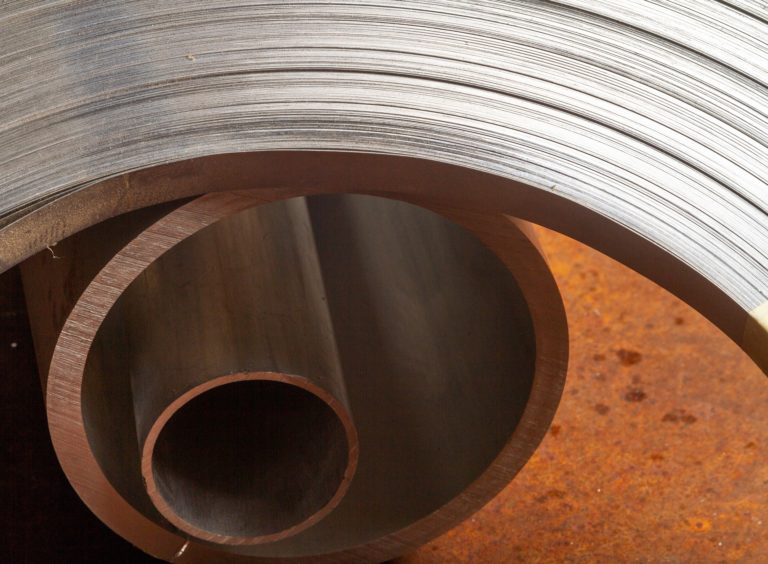 Alloy Suppliers
Alloy Suppliers Aluminum
Aluminum Aluminum Extrusions
Aluminum Extrusions Copper-Brass-Bronze
Copper-Brass-Bronze Magnets
Magnets Nickel
Nickel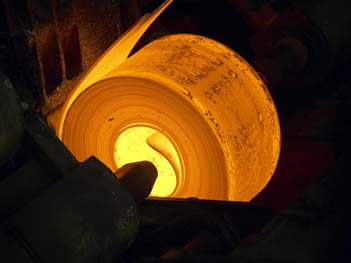 Stainless Steel
Stainless Steel Stainless Steel Tubing
Stainless Steel Tubing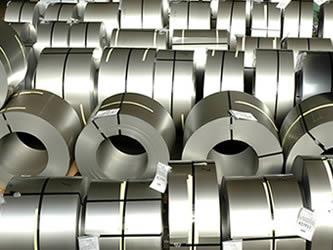 Steel Service Centers
Steel Service Centers Titanium
Titanium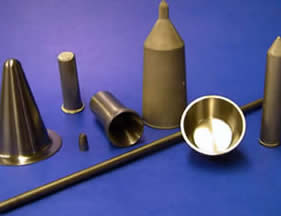 Tungsten
Tungsten Wire Rope
Wire Rope Castings & Forgings
Castings & Forgings Bulk Material Handling
Bulk Material Handling Electrical & Electronic Components
Electrical & Electronic Components Flow Instrumentation
Flow Instrumentation Hardware
Hardware Material Handling Equipment
Material Handling Equipment Metal Cutting Services
Metal Cutting Services Metal Forming Services
Metal Forming Services Metal Suppliers
Metal Suppliers Motion Control Products
Motion Control Products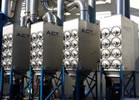 Plant & Facility Equipment
Plant & Facility Equipment Plant & Facility Supplies
Plant & Facility Supplies Plastic Molding Processes
Plastic Molding Processes Pumps & Valves
Pumps & Valves Recycling Equipment
Recycling Equipment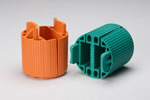 Rubber Products & Services
Rubber Products & Services